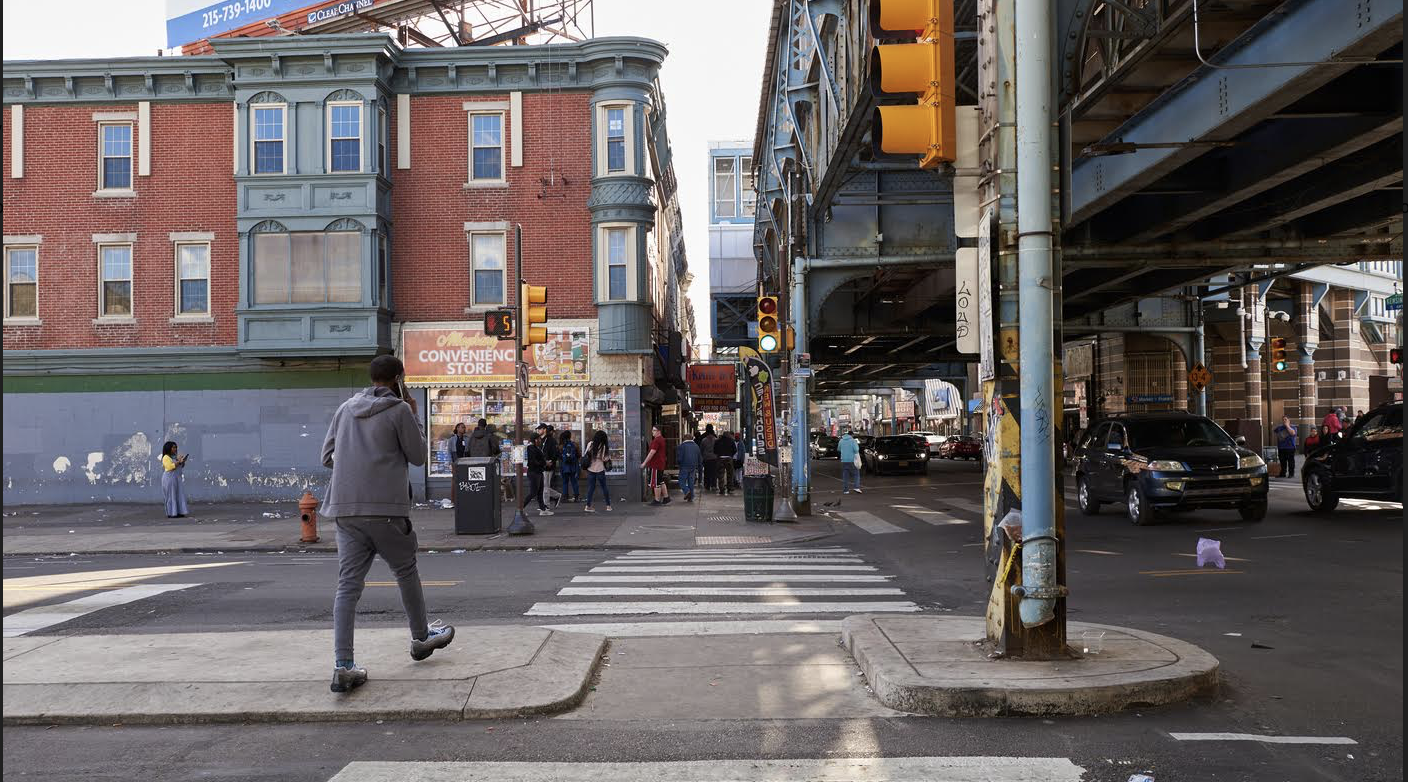During this COVID-19 crisis, probably many of us have had moments where we have thought, “Oh, shit, what’s going to happen when coronavirus spreads to (fill in the blank)? We have worried about those who fill the manifold jails and prisons of this land, and we’ve already seen those horrible potentialities begin to unfold. We’re now first starting to see what will happen when community spread happens in more rural locations far removed from health care facilities and with little social infrastructure. Bound at home, I have found myself wondering about what’s going on with the relatively large homeless population who otherwise would congregate most days at the library where I work. In all of these cases, we watch grimly from afar or close up, or maybe we try to do something—safely.
Now, as was inevitable, the reality of the pandemic has begun hitting Kensington, a neighborhood in north Philadelphia that The New York Times once called “The Wal-Mart of Heroin,” and other outlets have labeled a case study in the nation’s opioid crisis.
According to recent news reports, if you drove or, better yet, could see a Google street view of Kensington Avenue–the main thoroughfare in the neighborhood–right now, you might not believe your eyes. In a time when many usually teeming urban streetscapes are devoid of their quotidian sights and sounds, Kensington stands out: there are people all over the sidewalks and streets. In a time when “social distance shaming” has become a thing, the folks queueing up to purchase drugs in what is regularly called the country’s largest open air drug market are not being shamed. They might, however, be yelled at by the dealer, who himself wears a mask and tells his buyers to stay six feet away from him.
As The Philadelphia Inquirer and the nightly news heads wonder what further calamity might befell the neighborhood as the toxic stew of addiction, homelessness, drug violence, hunger and deep and widespread poverty come head to head with the coronavirus, they have largely focused on the fact that cops were not doing much of anything to stop the dealing, except occasionally using a loudspeaker to tell people to take distance. Or, the stories have focused on whether the city could just force people into quarantine, similar to the idea of involuntarily committing addicts that was floated last year by councilwoman María Quiñones-Sánchez. But for a neighborhood that has seen such a level of perennial disinvestment as Kensington, for one that has become a media punching bag and shorthand for decay beyond repair, more policing and/or filling up mental health wards was never even close to an adequate response.
Much has been written and said in the media about the universalizing nature of the pandemic. We’re all in this together—Wall Street day traders and restaurant servers, CEOs and secretaries, everyone has to stay home! Obviously, despite this daily drumbeat, many people see through this bullshit idea, even while recognizing the importance of largely adhering to the guidelines set forth. COVID-19 is a crisis that is spreading itself out over a nation already experiencing multiple crises—American society is, as Hard Crackers says, “a ticking time bomb”—and we all know the virus has the potential to decimate those who are already experiencing most acutely the effects of these crises. As the virus moves its way through the few square miles that are the site of the nation’s worst urban opioid crisis,councilwoman Quiñones-Sánchez, whose ward includes parts of the neighborhood says, “No one deserves what’s brewing in Kensington.” Now, I’m not interested in examining the councilwoman’s motives or what’s in her heart, but clearly the implication is that some people might think that at least the addicts, homeless and those resorting to “dealing death” in Kensington might actually deserve whatever kind of fate the virus deals them. Of course, you and I might think that no one deserved what was “brewing” in Kensington before the coronavirus came. But if what is unfolding right now is a morality play, it’s clear the city of Philadelphia is its author: and those in power long ago determined that they don’t care what happens to any of the working class and poor people, addicts and dealers among them, who call Kensington home. They are just going to see how it all plays out.
***
Over the next days and weeks we hope to continue publishing stories about daily life amid the Coronavirus. We are looking for testimonials from everyday people about workplace safety, unemployment and housing issues, struggles with paying bills and taking care of their loved ones as well as any acts of solidarity and collective action in these very difficult times. We want to hear from you! If you have a story that you want to share with us, please email the editor at editor@hardcrackers.wqzzauofih-ypj689jde4l2.p.temp-site.link.

